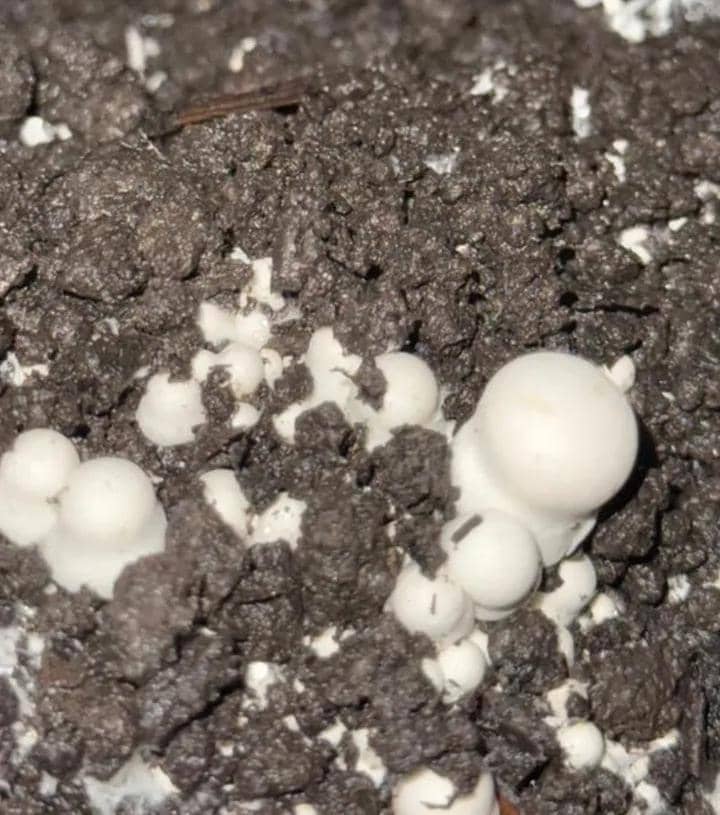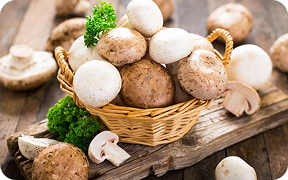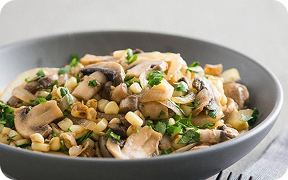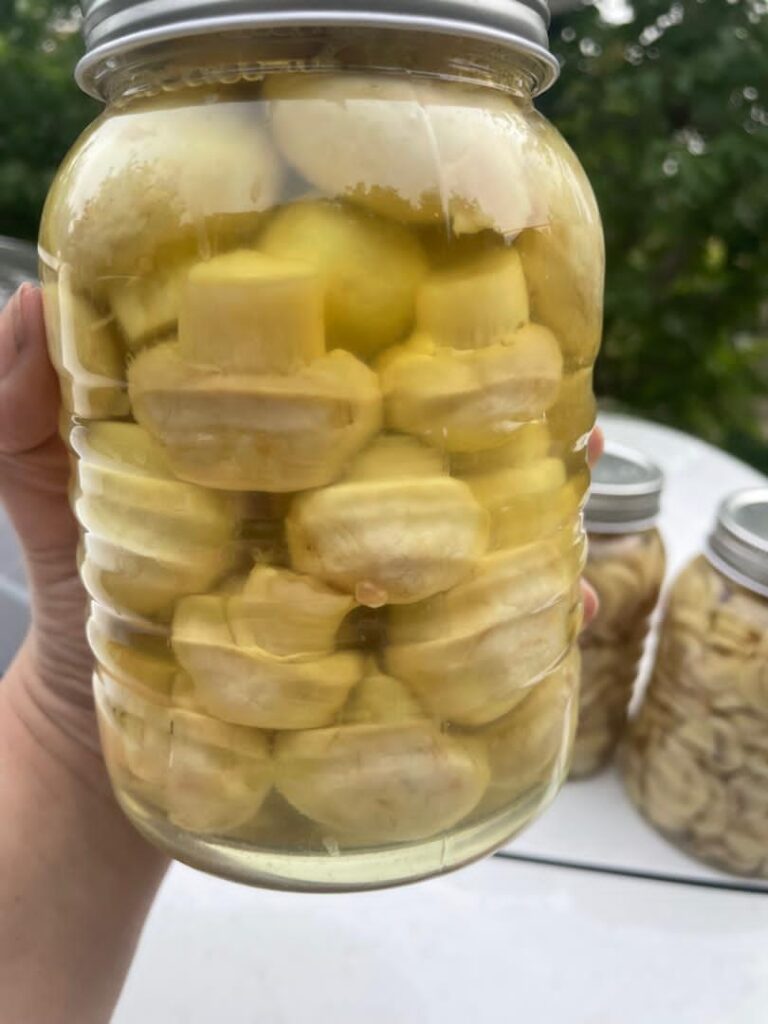Introduction
The production of mushroom compost, also known as growing media, is one of the most critical steps in the cultivation cycle of edible mushrooms, especially button mushrooms (Agaricus bisporus). Many novice growers view compost as simply a physical environment for spawning and growth of filaments. But this view is only partially true. Compost is actually a complex and dynamic nutritional system that is carefully designed and processed to provide the energy and nutrients needed by the mushroom mycelium. Choosing the right raw materials, mixing them carefully, and executing the fermentation and pasteurization processes correctly will ensure the final quality of the compost and, consequently, the quantity and quality of the mushroom crop.
This comprehensive guide aims to provide mushroom growers with expert and detailed information, explaining the steps involved in compost production from the initial selection of raw materials to the creation of an ideal growing medium. We will focus exclusively on the key role of each raw material, the details of the fermentation (phase 1) and pasteurization/conditioning (phase 2) processes, as well as methods for measuring compost quality.
1. The Importance of Compost: Beyond a Growing Media
Mushroom compost, contrary to popular belief, is not simply a framework or physical support for the growth of fungal hyphae. The substrate is actually a rich, hand-picked nutrient medium that is carefully designed to meet the specific needs of the mushroom mycelium. The mushroom mycelium, especially in saprophytic (organic matter-decomposing) species such as button mushrooms, is unable to directly absorb complex organic materials. Rather, it requires the breakdown of these materials into simpler, absorbable molecules.
Compost begins this process of decomposition and transformation within itself. Various microorganisms that become active during the composting process (bacteria, yeasts, and other fungi) break down the complex substances in the raw materials and convert them into compounds that the mushroom mycelium can use as a primary source of carbon, nitrogen, and other minerals and vitamins.
Key points about the importance of compost as a source of nutrition:
Mycelium selectivity: The mycelium of the desired mushroom (e.g., button mushroom) has a high competitive capacity against other microorganisms. The composting process is designed to largely eliminate harmful and competing microorganisms and provide an environment in which the desired mushroom mycelium gains relative advantage and rapidly establishes and grows.
Providing nutrients: Compost is the main source of energy (mainly carbon) and building blocks (mainly nitrogen) for mycelium growth and development. The carbon to nitrogen (C/N) ratio in the final compost is a critical parameter that affects the growth rate, productivity, and disease resistance of the mycelium.
Physiological effects: Compost not only provides nutrients, but also creates specific physical and chemical conditions that are essential for the physiological processes of the fungus (such as respiration, nutrient absorption, and fruiting body formation). Proper pH, sufficient moisture, and air porosity are critical for mycelium growth.
In essence, compost is a “pre-prepared food” for fungi. The composting process is designed to precisely engineer the nutrient composition and remove growth inhibitors to provide the best conditions for fungi to establish and grow.
2. Key ingredients of compost and their role
Combining raw materials in mushroom compost production is an art and science that requires a deep understanding of the role of each component. Here is a detailed explanation of the role of each of the main ingredients:
2.1. Straw and stubble (structural carbon source)
Straw (wheat, barley, rice stalks) and stubble (the remaining part of the stalk after harvesting) are the main sources of structural carbon in button mushroom compost. These materials are mainly composed of cellulose, hemicellulose and lignin.
The role of carbon: Carbon is the backbone of organic molecules and the primary source of energy for all living things, including microorganisms and fungal mycelium. During the composting process, microorganisms (especially bacteria and secondary fungi) break down long chains of cellulose and hemicellulose, releasing simpler sugars and more available carbon.
Bedding production: Straw and chaff provide the physical structure of the compost. They allow air (oxygen) to penetrate, which is essential for aerobic bacteria and fungal mycelium to breathe, by creating voids (porosity). They also increase the water-holding capacity of the compost.
C/N ratio management: Straw and stubble have a high C/N ratio (typically between 50:1 and 100:1). This high ratio, at the beginning of the process, controls the rate of decomposition of the material and prevents excessive heat and ammonia production. In later stages, by adding nitrogen sources, the C/N ratio is brought into the optimal range for fungal growth (around 18:1 to 22:1).
Specialized details:
Lignin in straw is a very resistant substance and is difficult to break down even for many microorganisms. In the composting process, the activity of lignin-degrading fungi (such as some species of white wood fungi) as well as some bacteria help to gradually break down lignin and release nutrients. The degree of success in breaking down lignin affects the longevity and stability of the compost.
2.2. Horse/chicken manure (main source of nitrogen)
Animal manure, especially fresh horse and chicken manure, is the main source of nitrogen and other nutrients such as phosphorus, potassium, and trace minerals in mushroom compost.
Role of Nitrogen: Nitrogen is essential for the synthesis of proteins, amino acids, enzymes, and other vital compounds in the cells of microorganisms and fungal mycelium. Nitrogen also plays a role in the formation of DNA and RNA.
Energy and nutrient supply: In addition to nitrogen, manure contains amounts of available carbon (in the form of urea, proteins, and simpler carbohydrates) that act as an energy source for the bacteria in the compost. This process produces the heat needed for the initial stages of composting.
Effect on C/N ratio: Manure has a low C/N ratio (around 10:1 to 20:1). Adding manure to straw and stubble reduces the overall C/N ratio of the mixture, bringing it closer to the range suitable for microbial activity and ultimately fungal growth.
Improves moisture and texture: Manure, by its nature, helps absorb and retain moisture in the compost and also helps improve the texture of the mixture.
Specialized details:
Horse manure is often preferred because it has a slightly higher carbon to nitrogen ratio than chicken manure, as well as a better fiber structure. Chicken manure, due to its higher nitrogen content, can quickly increase ammonia levels, so its use requires more care and experience. When using chicken manure, it is often recommended to mix it with some straw or other carbonaceous material and allow it to undergo some initial fermentation (i.e., “graying”) to reduce its ammonia levels.
2.3. Agricultural gypsum (calcium sulfate – CaSO_4)
Agricultural gypsum, as an additive, plays several roles in the compost production process:
pH adjustment: The optimal pH for the activity of beneficial microorganisms and fungal mycelium is usually in the neutral to slightly alkaline range (around 6.5 to 7.5). During the composting process, the production of organic acids by bacteria can cause the pH to drop. Agricultural gypsum, with its buffering properties, helps maintain the pH in the desired range.
Improves texture and aeration: Gypsum reacts with compost particles, causing “flocculation” of finer particles and increasing the porosity of the substrate. This improves air (oxygen) access for aerobic microorganisms as well as fungal mycelium. Compost with the right texture prevents over-compaction and provides enough space for respiration and growth.
Prevents sticking: Gypsum prevents the compost particles from sticking too much to each other and to tools (such as excavators). This facilitates the mixing and moving of the compost.
Calcium supply: Gypsum is a source of calcium, which is essential for the cell structure of the fungus as well as the activity of some enzymes.
Ammonia control: Gypsum reacts with the released ammonia ((NH_3)) and converts it to ammonium ((NH_4^+)). Ammonium is less volatile and remains in the compost and is gradually consumed by microorganisms or fungi. This property helps control ammonia escape and prevent mycelium poisoning.
Specialized details:
The amount of gypsum used usually varies between 2 and 5 percent of the dry weight of the raw materials. Excessive use of gypsum can cause the compost to become too dry or absorb too much water. On the other hand, a lack of gypsum will lead to compaction, low pH, and problems with aeration.
3. Description of Phase I Fermentation
The first phase of composting, also known as fermentation or primary decay, is an aerobic (oxygen-requiring) process in which the raw materials are mixed and placed under controlled conditions of temperature and humidity. The main goal of this phase is to reduce the carbon to nitrogen (C/N) ratio, break down complex materials, and create a favorable environment for the growth of thermophilic (heat-loving) bacteria.
3.1. Wetting
The first step in the first phase is to sufficiently soak the raw materials (mainly straw and chaff). The purpose of soaking is to bring the moisture content to the appropriate level (around 60-70%) and soften the cellulose fibers so that they become more accessible for the activity of microorganisms.
Methods: Soaking can be done by flooding (immersing the straw in water), spraying water under pressure, or mixing with moist materials (such as fresh manure).
Moisture content: The ideal moisture content can be tested by squeezing a handful of compost in your hand. If a few drops of water come out, the moisture is adequate. If too much water comes out, the compost is too wet (leading to oxygen deficiency and anaerobic conditions), and if it turns to ash, it is too dry.
3.2. Mixing
After soaking, all the raw materials (straw, manure, bran, gypsum and other additives) are mixed together in precise proportions. This mixing must be done in such a way that the materials are evenly distributed.
Goal: Evenly distribute moisture, nitrogen (from manure), carbon (from straw), gypsum, and other nutrients. Also, create a structure suitable for aeration.
Tools: Industrial mixers, excavators, or manual methods for small scales.
3.3. Composting Pile Formation
After mixing, the materials are piled up in regular mounds (heaps) of defined dimensions (e.g. 1.5 to 2 m wide, 1 to 1.5 m high and varying lengths). The shape and dimensions of the heap are important to facilitate subsequent processes (e.g. aeration and turning).
Natural expansion: At this stage, aerobes (aerobic bacteria) begin to consume available organic matter and produce heat and carbon dioxide. The temperature in the center of the pile rises rapidly, reaching 50 to 70 degrees Celsius. This process is called “self-heating.”
The main goal of the first phase:
Decreased C/N ratio: Bacteria consume nitrogen faster than carbon, so the C/N ratio decreases during this phase. This is necessary to overcome competition with other microorganisms and provide available nitrogen for the fungal mycelium.
Heat generation: High temperatures (around 60-70°C) help in the initial pasteurization of the compost and kill some pathogenic microorganisms and pests.
Digestion: The gradual breakdown of complex carbohydrates (cellulose and hemicellulose) into simpler sugars.
3.4. Aeration and Turning
The first phase requires constant aeration to ensure oxygen reaches all parts of the pile. Otherwise, anaerobic conditions will develop, increasing the production of harmful acids and ammonia, and disrupting the composting process.
Turning the piles: Piles are usually turned between 1 and 3 times during the first phase. Turning means moving the outer parts of the pile inwards and the inner parts outwards.
Rotation goals:
Redistribution of nutrients and moisture.
Re-aeration: The introduction of oxygen into the parts that have been consumed.
Temperature control: cooling hot spots and heating cold spots.
Reducing C/N ratio: ensuring uniform material consumption.
Duration of the first phase: This phase usually lasts between 7 and 14 days and varies depending on the raw materials, pile size, and environmental conditions.
Important note: Insufficient aeration and loss of aerobic conditions in the first phase leads to the formation of toxic compounds such as hydrogen sulfide ((H_2S)) and excessive ammonia, which seriously damages the mushroom mycelium.
4. Description of Phase II: Pasteurization and Conditioning
After the first phase is complete, the compost enters the second phase, which is divided into two main parts: pasteurization and conditioning. The main goal of this phase is to eliminate pests, diseases, and competitors, and to convert the remaining ammonia into forms that can be used by the fungus.
4.1. Pasteurization
This step involves applying controlled heat to the compost to kill undesirable microorganisms (such as harmful molds, pathogenic bacteria, and pests) while preserving beneficial and desirable microorganisms (such as certain bacteria that coexist with the fungal mycelium).
Conditions: Pasteurization is usually carried out in closed environments such as pasteurization tunnels or large bags (such as wash bags). The temperature is usually maintained at around 55-60°C for 4-8 hours (depending on the volume and moisture content of the compost).
Methods of applying heat:
The most common method is to inject steam into an enclosed space containing compost.
Hot air: Use of hot air with forced circulation.
Why pasteurization?
Elimination of competitors: Many saprophytic molds (such as green and black molds) that were active in the first phase are destroyed at pasteurization temperatures.
Pest removal: Insect eggs and larvae (such as mushroom flies) are destroyed.
Chemical change: Some undesirable compounds are broken down and new compounds are created that are beneficial for fungal growth.
Ammonia reduction: Some of the ammonia released by heating is converted to gas and exits the compost.
4.2. Conditioning
After the pasteurization stage, the compost enters the conditioning stage. This stage is considered the most critical part of the second phase and its main goal is to completely remove free ammonia and convert it into nitrogen that can be absorbed by the mushroom mycelium.
Mechanism: During pasteurization, some ammonia ((NH_3)) accumulates in the compost. Free ammonia is toxic and severely inhibits the establishment of button mushroom mycelium. The conditioning step, by providing the right conditions, allows:
Ammonia escape: By aerating (blowing air) into the compost, the released ammonia is released into the environment as a gas.
Ammonia consumption by bacteria: The remaining bacteria (which are more heat-resistant) consume ammonia and convert it into more stable and absorbable nitrogen compounds.
Lowering pH: The consumption of ammonia by bacteria lowers the pH of the compost, pushing it into the range suitable for fungal growth.
Conditioning conditions:
Temperature: The temperature at this stage is usually kept between 45 and 50 degrees Celsius. Temperatures above this can damage the beneficial bacteria and mushroom mycelium.
Ventilation (Aeration): Continuous and controlled ventilation with air blowing is essential to remove ammonia and provide the oxygen needed by bacteria.
Humidity: Humidity should be maintained at an optimal level (around 58 to 60 percent).
Duration of the second phase: This phase usually lasts between 7 and 10 days.
Emphasizing the importance of ammonia removal:
Failure to completely remove ammonia during the conditioning stage is one of the main reasons for failure in mushroom cultivation. Button mushroom mycelium is extremely sensitive to free ammonia. High levels of ammonia cause burning and loss of filaments, failure to establish spawn, and ultimately failure to form mushroom clumps (buttons). Growers should proceed to the next stage (seeding) with assurance that the final compost does not have a strong ammonia odor.
5. Quality assessment of high-quality compost
After successful completion of the second phase (pasteurization and conditioning), the compost should be assessed for quality to ensure that an ideal growing medium has been provided for the establishment and growth of the mushroom mycelium.
5.1. Appearance
Color: Good quality compost has a uniform dark brown color. A light, grayish color indicates insufficient fermentation or the presence of undesirable molds. A deep black color may indicate anaerobic conditions and poor fermentation.
Texture: Compost should have a compact but loose, aerated structure. It should not be in the form of mud lumps or extremely dry and crumbly. Proper compaction ensures moisture retention and prevents the surface from drying out.
Free from undecayed raw materials: Primary raw materials such as straw should be largely decomposed and should not be visible in long, distinct pieces.
5.2. Compost smell
Absence of ammonia odor: This is the most important indicator of quality. Compost should not have any strong, unpleasant ammonia odor. A faint odor similar to that of ammonium (not free ammonia) may be tolerable, but a strong odor is a sign of a serious problem.
Favorable odor: Good compost has an odor similar to that of damp soil, mushrooms, or a forest after rain. This odor indicates the activity of favorable microorganisms.
Absence of a sour or moldy smell: A sour smell (similar to vinegar) or a moldy smell (similar to moldy bread) is a sign of the presence of undesirable microorganisms and spoilage of the compost.
5.3. Field tests (optional but useful)
Moisture test: Squeeze a handful of compost in your hand. It should feel slightly damp and a few drops of water should come out, but it should not be dripping.
pH test (using a pH meter): The pH of the final compost should be in the range of 6.8 to 7.5.
5.4. Ammonimetry (on an industrial scale)
On large farms, ammonia meters are used to accurately measure the ammonia concentration in the compost. The free ammonia concentration must fall below 20 ppm (parts per million) for the compost to be considered suitable for seeding.
Conclusion:
Mushroom composting is a scientific and meticulous process that requires patience, precision, and a deep understanding of the biochemistry and microbiology of the process. By following the guidelines provided in this guide, growers can produce quality compost and lay a solid foundation for a successful mushroom harvest season. The quality of the compost directly impacts the rate of mycelium growth, disease resistance, and ultimately the amount and quality of the final product. The effort to produce quality compost is a valuable investment in the long-term success of mushroom cultivation.





